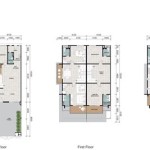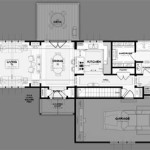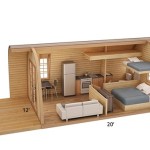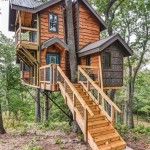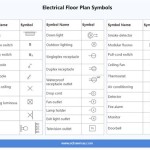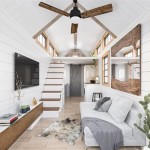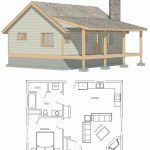Corner Block Floor Plans: Maximizing Space and Design Potential
Corner block floor plans present both unique opportunities and specific challenges for architects and homeowners. Unlike typical rectangular lots, corner blocks offer increased street frontage, potentially enhancing curb appeal and allowing for varied design approaches. However, they also require careful consideration of setbacks, privacy, and the overall flow of the building within the site's constraints. Understanding the nuances of corner block design is crucial for creating functional, aesthetically pleasing, and compliant homes.
A corner block is a property situated at the intersection of two streets. This positioning provides greater visibility and accessibility but often introduces complexities in terms of planning regulations. Local councils usually impose specific setback requirements for both street-facing sides, impacting the buildable area. Furthermore, designs must thoughtfully address noise pollution from traffic and ensure adequate privacy for occupants.
Understanding Site Constraints and Opportunities
The first step in developing a corner block floor plan involves a thorough site analysis. This includes evaluating the orientation of the block, existing landscaping, neighboring structures, and prevailing wind directions. Solar orientation is especially important, as it influences the amount of natural light entering the building and affects heating and cooling costs. Identifying the north-facing aspect is essential for maximizing passive solar design principles.
Setback regulations are a primary constraint. Corner blocks typically have two frontages, each requiring a specified distance between the building and the property line. These setbacks affect the position and size of the house. It's important to consult with the local council or a qualified planner to understand the exact setback requirements before commencing design work. These regulations can also influence the placement of garages, driveways, and landscaping elements.
Privacy is another critical consideration. Given the increased exposure from two street frontages, it is often necessary to incorporate design features that mitigate overlooking from passersby and neighboring properties. This can be achieved by strategically positioning windows, using privacy screens, or incorporating landscaping with mature trees and shrubs along the boundaries. The internal layout should also prioritize privacy in bedrooms and living areas.
Conversely, the increased street frontage offers opportunities for enhancing curb appeal. The design can incorporate architectural features that create a strong visual statement and complement the surrounding neighborhood. This might include a prominent entrance, well-designed landscaping, and a cohesive architectural style that ties the building to its surroundings. Careful consideration of materials and colors can also contribute to an attractive exterior.
The shape of the corner block itself can influence the floor plan. Some corner blocks are more rectangular, while others are more irregular. The shape dictates how the house can be positioned on the site, and the internal layout must adapt to the block's dimensions. Irregular-shaped blocks can be more challenging, requiring creative design solutions to maximize the use of space.
Designing for Functionality and Flow
A well-designed corner block floor plan prioritizes functionality and flow. The internal layout should maximize the use of space while providing comfortable living areas and efficient circulation. Careful consideration should be given to the placement of rooms, the orientation of windows, and the integration of indoor and outdoor spaces.
The entry point is a crucial element of any floor plan, particularly for corner blocks. The main entrance should be clearly defined and easily accessible from the street. It should also create a welcoming impression and provide a smooth transition from the exterior to the interior. The placement of the entry can also help to direct traffic flow within the house.
Living areas should be oriented to maximize natural light and views. Positioning living rooms and dining areas towards the north-facing aspect can take advantage of passive solar heating in winter. Large windows and sliding doors can connect these areas to outdoor spaces, creating a seamless flow between indoors and out. The floor plan should also consider the prevailing wind direction to optimize natural ventilation.
Bedrooms should be located in quieter areas of the house, away from street noise and high-traffic zones. Ensuring privacy is also vital, with windows strategically positioned to minimize overlooking. Master suites may benefit from ensuite bathrooms and walk-in closets, creating a private retreat within the home.
Kitchens are often considered the heart of the home, and their placement should reflect this. A well-designed kitchen is functional, efficient, and aesthetically pleasing. It should be located near the dining area and have easy access to outdoor entertaining spaces. Ample storage and countertop space are essential, as is good ventilation to remove cooking fumes.
Garages and driveways require careful planning on corner blocks. The best location for the garage will depend on the size and shape of the block, setback requirements, and the overall design of the house. Integrating the garage into the house design can create a cohesive look, while a detached garage may offer more flexibility in terms of placement. The driveway should be wide enough to accommodate vehicles and provide easy access to the garage or carport.
Outdoor spaces play a crucial role in corner block design. Integrating patios, decks, and gardens can extend the living area and create a connection to the outdoors. These spaces should be designed to maximize privacy and provide shade during the hottest times of the day. Landscaping can also enhance the curb appeal of the property and provide a buffer from street noise. Thoughtful planning can seamlessly integrate the indoor and outdoor areas.
Optimizing Privacy, Noise Reduction, and Energy Efficiency
Beyond functionality and flow, addressing privacy, noise reduction, and energy efficiency is crucial for creating a comfortable and sustainable home on a corner block. These factors should be considered throughout the design process, from the initial site analysis to the selection of materials and finishes.
Privacy concerns stemming from increased street frontage can be addressed through various design strategies. Window placement is paramount; High windows, obscured glass, and strategically positioned screens can limit visibility from the street without compromising natural light. Internal courtyards or enclosed outdoor areas can also provide private outdoor spaces. Landscaping, including hedges, trees, and fences, can further enhance privacy and screen the property from view.
Noise pollution from traffic is a common issue on corner blocks. Addressing this requires a multi-faceted approach. Double-glazed windows are highly effective at reducing noise transmission. Insulating walls and ceilings can also minimize sound penetration. Strategic landscaping can act as a sound barrier, absorbing some of the noise from the street. Internally, placing bedrooms away from the street-facing side of the house can further mitigate noise disturbance.
Energy efficiency is increasingly important in modern home design. Corner blocks, with their increased exposure, require careful attention to insulation, ventilation, and solar orientation. Maximizing passive solar gain in winter and minimizing heat gain in summer can significantly reduce heating and cooling costs. This involves orienting the house to take advantage of the sun's path and incorporating shading devices to block direct sunlight during peak hours.
Insulation is another crucial element of energy-efficient design. Properly insulating walls, ceilings, and floors can minimize heat loss in winter and heat gain in summer. Choosing energy-efficient windows and doors is also essential. Double-glazed windows with low-E coatings can significantly reduce heat transfer. Sealing air leaks around windows, doors, and other openings can further improve energy efficiency.
Natural ventilation can also contribute to energy efficiency. Strategically placed windows and vents can create a cross breeze, allowing natural air to circulate throughout the house. This can reduce the need for air conditioning in summer. Understanding the prevailing wind direction is essential for optimizing natural ventilation.
Sustainable materials and construction practices can further enhance the energy efficiency and environmental impact of the home. Using recycled materials, such as reclaimed timber or recycled concrete, can reduce the embodied energy of the building. Incorporating rainwater harvesting systems can conserve water and reduce water bills. Installing solar panels can generate renewable energy and reduce reliance on fossil fuels.
In conclusion, corner block floor plans demand a careful and considered approach to design. By understanding the site's constraints and opportunities, prioritizing functionality and flow, and addressing privacy, noise reduction, and energy efficiency, it is possible to create a beautiful, functional, and sustainable home that maximizes the potential of this unique type of property. Careful planning and attention to detail are essential for success.

Corner Block House Design And Building Meridian Homes

Luxury Corner Block Floor Plans

Floor Plan Friday Corner Block

Corner Block Floor Plan

4 Bedroom House Plans Bed Corner Block Plan 107mc
Corner Block Floor Plan Help Home Renovation Building Forum

Floor Plan Friday Corner Block Split Level Katrina Chambers

6 Bed Duplex Corner Design Plan 295du 3 X 4 Cars Plans Lot

Hayward Corner Duplex Home Design House Plan By Champion Homes

La


